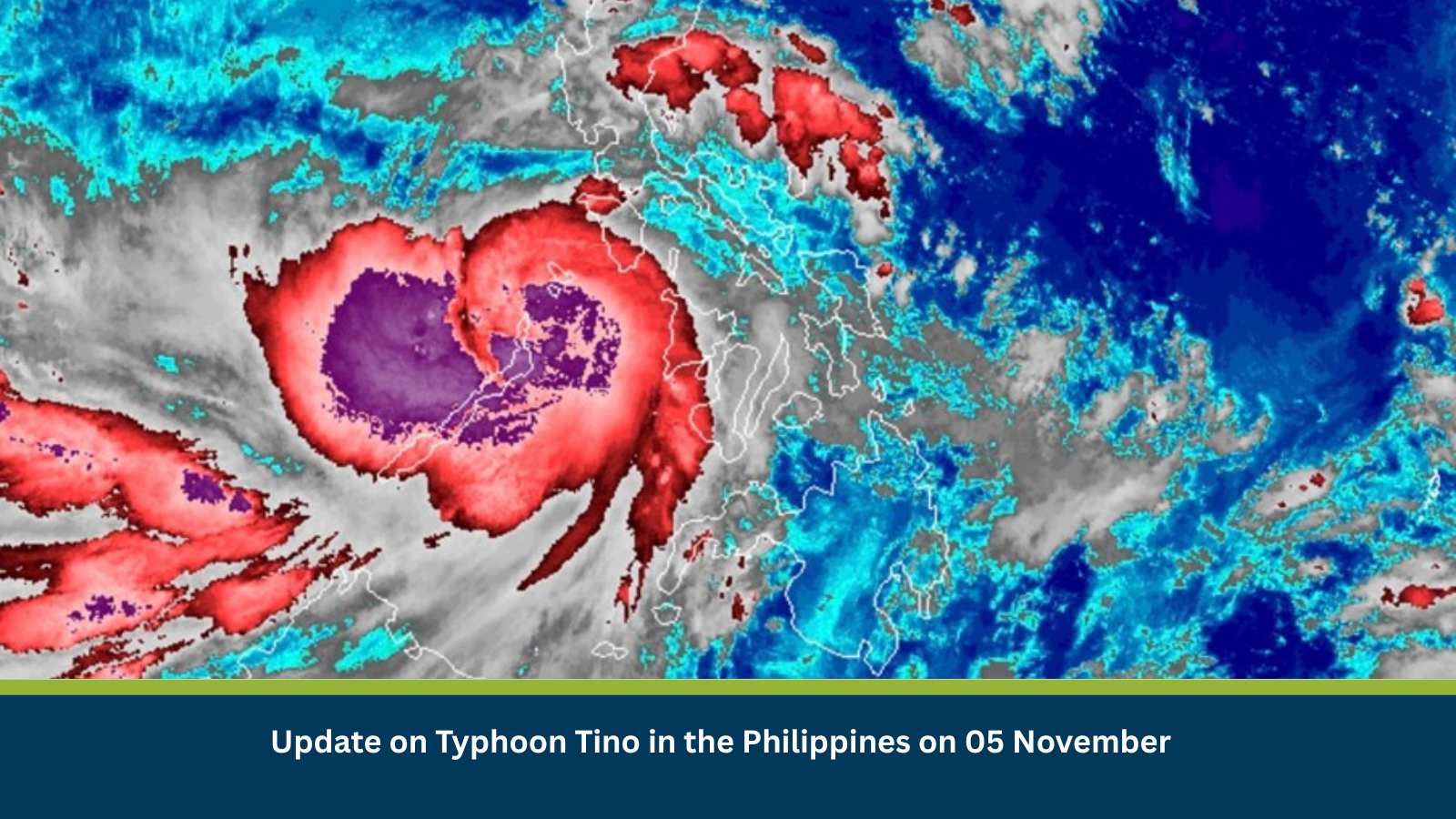What is Risk Analysis in the Context of Natural-Disaster Events
Natural-disaster risk analysis examines how extreme weather systems such as typhoons, monsoon surges, and floods affect population safety, infrastructure resilience, and operational continuity. The Philippines lies on the Pacific typhoon corridor, experiencing 15–20 storms annually. Regions like Palawan, Visayas, and Mindoro repeatedly sustain heavy losses from wind, rain, and storm surges.
The 05 November update on Typhoon Tino marks a transition from severe tropical storm to Typhoon status, with Signal No. 4 raised over Northern Palawan indicating sustained destructive winds and catastrophic flooding potential.
Executive Summary
- Date of Event: 05 November 2025
- Location: Northern Palawan and Western Visayas, Philippines
- Risk Category: Natural Disasters
- Severity Score: 4 / 5
- Confidence Level: 90 %
Typhoon Tino intensified over the West Philippine Sea, directly affecting Palawan, Mindoro, and Western Visayas. More than 4,000 families have been evacuated, with Puerto Princesa and Northern Palawan under a state of calamity. Sustained winds, torrential rains, and coastal inundation have caused chest-deep flooding, power outages, and transport paralysis. The storm’s projected duration—3 to 7 days—indicates prolonged humanitarian and operational disruption, consistent with the region’s historical vulnerability to typhoons such as Rai (2021) and Haiyan (2013).
Known Hotspots and Sensitive Areas
- High Impact: Puerto Princesa City, Roxas, Taytay, El Nido (Northern Palawan)
- Medium Impact: Calapan & Sablayan (Mindoro), Iloilo & Capiz (Western Visayas)
- Low Impact: Metro Manila & Central Luzon (secondary rainfall, low wind intensity.
Evacuations and relief staging are concentrated across Northern Palawan and coastal Mindoro, where terrain and drainage amplify flood impact.
Impact on Transportation and Services
- Roads: Puerto Princesa North & South Roads blocked by flood debris; inter-municipal travel halted.
- Air & Sea: Flights at Puerto Princesa (PPS), El Nido, and Coron cancelled; maritime operations suspended nationwide under Coast Guard Notice No. 5.
- Utilities: Widespread power cuts in Palawan and Mindoro due to downed lines; water supply contaminated in low-lying barangays.
- Telecom: Cellular and internet service intermittent; emergency radio networks active.
- Commerce: Retail, tourism, and agriculture in Palawan and Mimaropa temporarily shut; logistics rerouting via Cebu and Iloilo.
Recommended Actions
- Life Safety: Suspend field operations in affected provinces; enforce shelter-in-place orders per LGU advisories; maintain employee check-ins every 4 hours via SMS or radio.
- Asset Protection: Elevate equipment and inventory; secure windows and storage areas; ensure generators and fuel reserves for 72 hours.
- Continuity Planning: Pre-position critical supplies in unaffected regions (Iloilo, Cebu); activate remote work protocols for staff in Metro Manila and Visayas.
- Communications: Designate a single information officer for media and stakeholder updates; follow verified feeds from PAGASA and NDRRMC.
- Recovery Preparation: Map priority facilities for rapid damage assessment once conditions permit re-entry.
Multidimensional Impact
Typhoon Tino has triggered mass evacuations, critical infrastructure damage, and severe logistics bottlenecks across the central Philippines. Flooding threatens water quality and food supply chains, while prolonged outages could impede healthcare delivery and relief distribution. The humanitarian toll will extend beyond the storm’s exit, with disease outbreaks (leptospirosis, gastroenteritis) and mental-health stressors likely in evacuation centres. Proactive coordination among LGUs, private operators, and international partners will be decisive in reducing recovery time and economic loss.
Emergency Contacts
- Police: 117 • Fire: 911 • Ambulance: 911
- National Disaster Response: NDRRMC (+632 8911-5061 to 65)
- PAGASA: @dost_pagasa for weather bulletins
- Local Authorities: Palawan PDRRMO & Puerto Princesa City DRRMO
- Health Advisory: Department of Health Region IV-B for post-flood disease monitoring
Final Thoughts
Typhoon Tino represents a high-severity, high-confidence natural disaster, directly impacting critical population centres in Palawan and Mimaropa. While large-scale casualties are being mitigated through early evacuation, the cumulative effect on power, transport, and livelihoods will persist for weeks. Organizations should sustain emergency communication links, prioritize employee welfare, and coordinate relief logistics through trusted government channels. Recovery operations will require joint public-private efforts focused on restoration of utilities and rehabilitation of critical infrastructure across Palawan and the Western Visayas. Stay ahead of operational risks with real-time alerts, scenario modeling, and expert advisories with datasurfr’s Predict. Start your 14-day free trial of Datasurfr’s Risk Intelligence Platform today.






